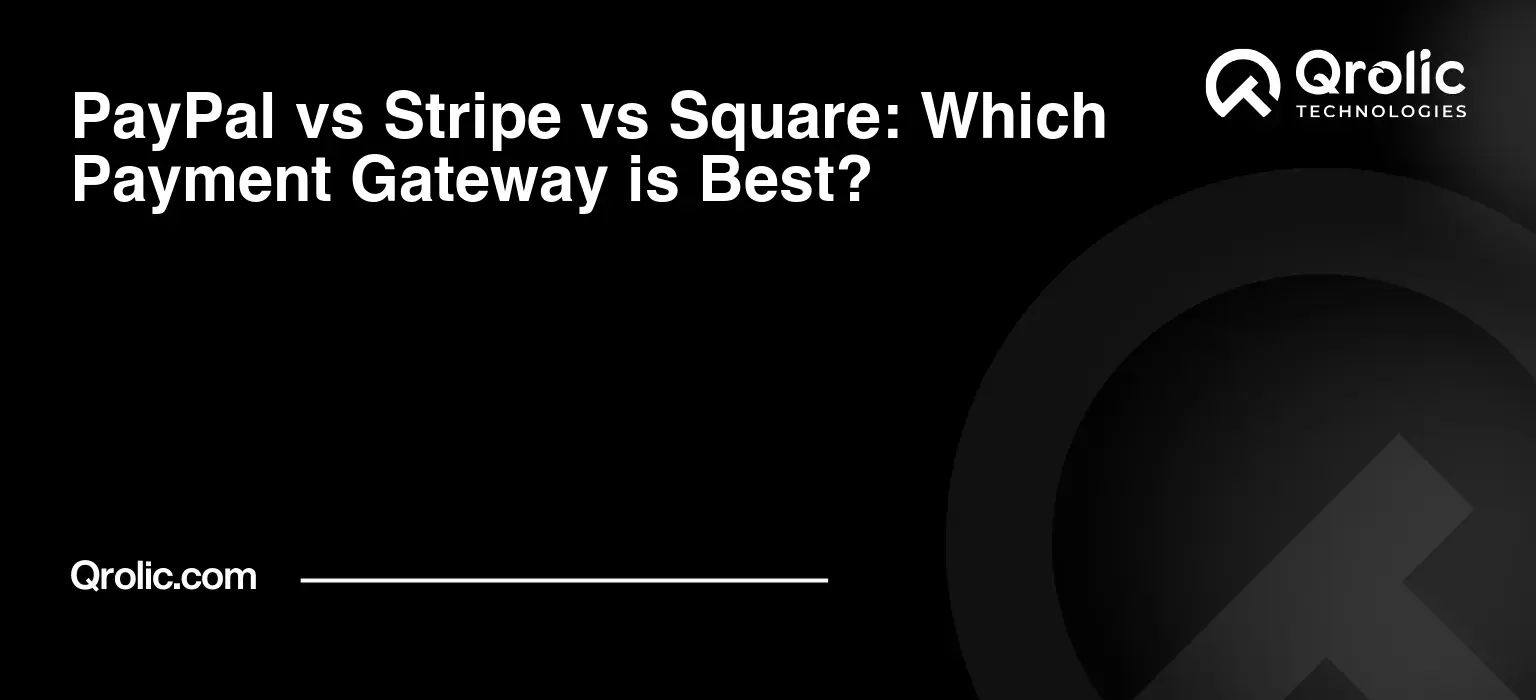Choosing the right online payment gateway is a pivotal decision for any business venturing into or solidifying its presence in the digital marketplace. The landscape is dominated by three titans: PayPal, Stripe, and Square. Each offers a unique suite of features, pricing models, and target audiences, making the selection process complex. This comprehensive guide dives deep into the intricacies of each platform, equipping you with the knowledge to determine which aligns best with your specific business needs and ultimately boosts your bottom line. When considering the “best e-commerce payment solutions,” understand that the optimal choice is highly contextual.
Quick Summary:
- PayPal: Easy, trusted, global, large user base.
- Stripe: For developers, customizable, advanced features.
- Square: Best for online and in-person sales.
- Choose based on your specific business needs.
Table of Contents
- I. Understanding Online Payment Gateways: The Foundation
- What is an Online Payment Gateway?
- Why are Payment Gateways Essential for E-Commerce?
- The Key Components of a Payment Gateway
- II. PayPal: The Established Leader
- What is PayPal and its Core Strengths?
- Key Features and Benefits of PayPal
- PayPal’s Pricing Structure
- PayPal’s Strengths and Weaknesses
- When is PayPal the Right Choice?
- III. Stripe: The Developer’s Darling
- What is Stripe and its Core Strengths?
- Key Features and Benefits of Stripe
- Stripe’s Pricing Structure
- Stripe’s Strengths and Weaknesses
- When is Stripe the Right Choice?
- IV. Square: The Omnichannel Solution
- What is Square and its Core Strengths?
- Key Features and Benefits of Square
- Square’s Pricing Structure
- Square’s Strengths and Weaknesses
- When is Square the Right Choice?
- V. Deep Dive: Comparing Key Features Head-to-Head
- VI. Choosing the Right Payment Gateway: A Step-by-Step Guide
- Step 1: Assess Your Business Needs
- Step 2: Compare Pricing Models
- Step 3: Evaluate Features and Functionality
- Step 4: Consider Security and Compliance
- Step 5: Test and Pilot
- VII. Optimizing Your Payment Gateway for Conversion
- Streamline the Checkout Process
- Build Trust and Security
- Offer Multiple Payment Options
- Provide Excellent Customer Support
- VIII. The Future of Payment Gateways
- IX. Qrolic Technologies: Your Partner in E-Commerce Success
- X. Conclusion: Making the Right Choice for Your Business
I. Understanding Online Payment Gateways: The Foundation
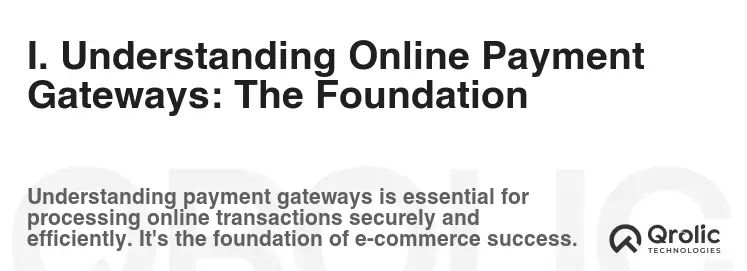
What is an Online Payment Gateway?
An online payment gateway acts as the intermediary between your business, your customer, and the bank that processes the transaction. Think of it as the virtual equivalent of a physical point-of-sale (POS) system. It securely transmits credit card information and other sensitive data, authenticates the transaction, and either approves or declines the payment. Without a payment gateway, accepting online payments would be cumbersome, insecure, and impractical.
Why are Payment Gateways Essential for E-Commerce?
- Security: Payment gateways employ robust encryption and fraud prevention measures to protect sensitive customer data. This is critical for maintaining trust and avoiding costly data breaches. PCI DSS compliance (Payment Card Industry Data Security Standard) is a key aspect, ensuring that all payment processors adhere to strict security guidelines.
- Convenience: They provide a seamless and convenient payment experience for customers, allowing them to pay using their preferred method (credit card, debit card, digital wallets, etc.). A smooth checkout process directly contributes to higher conversion rates and reduced cart abandonment.
- Global Reach: Many gateways facilitate international payments, allowing you to expand your customer base beyond geographical boundaries. They often support multiple currencies and payment methods prevalent in different regions.
- Automation: They automate the payment process, reducing manual effort and streamlining accounting. Integrations with accounting software ensure accurate record-keeping.
- Professionalism: Using a reputable payment gateway enhances your business’s credibility and perceived professionalism. Customers are more likely to trust businesses that utilize secure and established payment processing solutions.
The Key Components of a Payment Gateway
- Encryption: The process of converting sensitive data into an unreadable format to prevent unauthorized access during transmission.
- Tokenization: Replacing sensitive data, such as credit card numbers, with a non-sensitive equivalent, called a token. This token can be used for future transactions without exposing the actual card details.
- Fraud Detection: Sophisticated algorithms and security measures that identify and prevent fraudulent transactions, such as chargebacks and identity theft.
- Payment Processing: The process of transmitting payment information between the customer’s bank, the payment gateway, and your business’s bank.
- Reporting and Analytics: Tools that provide insights into payment trends, transaction history, and potential issues.
II. PayPal: The Established Leader
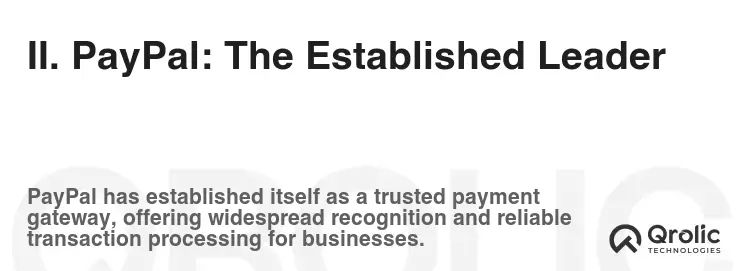
What is PayPal and its Core Strengths?
PayPal is one of the most widely recognized and trusted online payment platforms globally. Its primary strength lies in its vast user base, making it a familiar and convenient option for millions of online shoppers. Think of it as the “incumbent” in the online payment space.
Key Features and Benefits of PayPal
- Global Reach and Recognition: Operates in over 200 countries and supports 25 currencies. The PayPal logo is instantly recognizable, fostering trust with customers.
- Large User Base: Millions of active users already have PayPal accounts, simplifying the checkout process for them. They can pay with their stored credentials without entering their card details.
- Ease of Use: Setting up a PayPal account is straightforward, both for merchants and customers. Its user-friendly interface makes it accessible to users of all technical skill levels.
- Buyer Protection: PayPal offers buyer protection policies that can help customers get their money back if they are not satisfied with their purchase. This instills confidence and encourages purchases.
- Seller Protection: Similar to buyer protection, PayPal offers seller protection against chargebacks and fraudulent transactions, safeguarding your revenue.
- Mobile Payments: Seamless integration with mobile devices, allowing customers to pay on the go using the PayPal app.
- Invoicing: Built-in invoicing features for sending and managing invoices directly through the PayPal platform.
- Payment Buttons and Checkout Integration: Easy integration with various e-commerce platforms and website builders using pre-built payment buttons and checkout flows.
- PayPal Credit: Offers customers the option to pay later with PayPal Credit, potentially increasing sales by making purchases more affordable.
PayPal’s Pricing Structure
PayPal’s pricing structure generally involves a per-transaction fee and a percentage of the transaction amount.
- Standard Transaction Fees: Typically around 2.9% + $0.30 per transaction for standard online payments.
- Micropayments: Lower fees for small transactions (e.g., selling digital goods).
- International Transaction Fees: Higher fees for transactions involving currency conversion.
- Chargeback Fees: Fees associated with resolving chargebacks.
Example: Selling a product for $100 would typically result in a fee of $3.20 ($2.90 + $0.30).
PayPal’s Strengths and Weaknesses
Strengths:
- High brand recognition and trust.
- Large user base.
- Easy to set up and use.
- Buyer and seller protection.
- Versatile features for various business needs.
Weaknesses:
- Potentially higher transaction fees compared to competitors.
- Account holds and freezes can occur, impacting cash flow.
- Customer service can be challenging to navigate.
- Limited customization options for the checkout experience.
When is PayPal the Right Choice?
- Established Online Business: If you already have a significant online presence and want to leverage PayPal’s vast user base.
- Selling Internationally: If you need to accept payments from customers in multiple countries.
- Focus on Trust and Security: If you prioritize brand recognition and customer trust.
- Simple Integration: If you need a quick and easy payment solution with minimal technical expertise.
III. Stripe: The Developer’s Darling

What is Stripe and its Core Strengths?
Stripe is a powerful and highly customizable payment gateway favored by developers and businesses that require a more flexible and sophisticated solution. Its strength lies in its robust API and developer-friendly tools. It’s the “customizable powerhouse” of online payments.
Key Features and Benefits of Stripe
- Powerful API: A comprehensive API that allows developers to build custom payment flows and integrations.
- Developer-Friendly Tools: Extensive documentation, libraries, and SDKs that simplify the integration process.
- Customizable Checkout: Complete control over the look and feel of the checkout experience, allowing you to seamlessly integrate it with your brand.
- Advanced Fraud Prevention: Stripe Radar, a sophisticated fraud detection system that uses machine learning to identify and prevent fraudulent transactions.
- Subscription Management: Built-in tools for managing recurring payments and subscriptions.
- Connect: A platform for building marketplaces and platforms that require complex payment flows.
- Atlas: A tool for helping entrepreneurs incorporate their businesses in the US and set up a bank account.
- Support for Multiple Payment Methods: Accepts a wide range of payment methods, including credit cards, debit cards, digital wallets, and local payment methods.
- Integration with Popular Platforms: Seamless integration with popular e-commerce platforms, CRM systems, and other business tools.
Stripe’s Pricing Structure
Stripe’s pricing structure is generally transparent and competitive.
- Standard Transaction Fees: Typically around 2.9% + $0.30 per transaction for standard online payments.
- Volume Discounts: Discounts available for businesses with high transaction volumes.
- Additional Fees: Potential fees for certain features, such as chargeback protection or advanced fraud prevention.
Example: Similar to PayPal, selling a product for $100 would typically result in a fee of $3.20.
Stripe’s Strengths and Weaknesses
Strengths:
- Highly customizable and flexible.
- Powerful API for developers.
- Advanced fraud prevention.
- Comprehensive features for subscription management and marketplaces.
- Transparent pricing.
Weaknesses:
- Requires technical expertise to integrate.
- Can be more complex to set up than PayPal or Square.
- Less brand recognition than PayPal.
- May not be ideal for businesses with simple payment needs.
When is Stripe the Right Choice?
- Businesses with Developers: If you have a development team or the resources to hire developers to integrate Stripe.
- Custom Checkout Experience: If you need a highly customized checkout experience that matches your brand.
- Advanced Features: If you require advanced features like subscription management, marketplace payments, or sophisticated fraud prevention.
- Scalable Solution: If you anticipate significant growth and need a payment gateway that can scale with your business.
IV. Square: The Omnichannel Solution
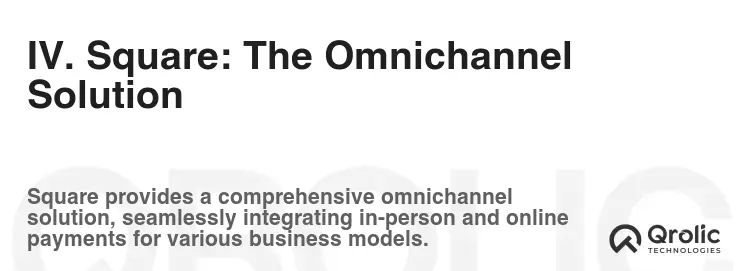
What is Square and its Core Strengths?
Square is an integrated payment platform that excels in providing solutions for both online and offline businesses. Its strength lies in its seamless integration between in-person and online payments, making it ideal for businesses with omnichannel operations. Think of it as the “unified commerce” solution. Square provides “best e-commerce payment solutions” for a specific type of business – those that are also in the physical realm.
Key Features and Benefits of Square
- Integrated POS System: A comprehensive point-of-sale system for managing in-person sales, inventory, and customer relationships.
- Online Store Builder: A user-friendly platform for creating and managing an online store.
- Payment Processing for Online and Offline: Seamlessly accepts payments both online and in-person using the same platform.
- Hardware Solutions: A range of hardware solutions, including card readers, registers, and stands.
- Inventory Management: Robust inventory management tools for tracking stock levels and managing product information.
- Customer Relationship Management (CRM): Built-in CRM features for managing customer data and marketing campaigns.
- Marketing Tools: Tools for creating and sending email marketing campaigns, promotions, and loyalty programs.
- Employee Management: Features for managing employee schedules, payroll, and permissions.
- Square Capital: Access to funding and loans for small businesses.
Square’s Pricing Structure
Square’s pricing structure is generally straightforward and predictable.
- Standard Transaction Fees: Typically around 2.6% + $0.10 per transaction for in-person payments and 2.9% + $0.30 per transaction for online payments.
- Monthly Fees: Monthly fees for certain features, such as advanced reporting or employee management.
- Hardware Costs: Costs associated with purchasing Square hardware, such as card readers or registers.
Example: An in-person sale of $100 would typically result in a fee of $2.70 ($2.60 + $0.10), while an online sale of $100 would result in a fee of $3.20.
Square’s Strengths and Weaknesses
Strengths:
- Seamless integration between online and offline payments.
- Comprehensive POS system.
- User-friendly interface.
- Wide range of features for small businesses.
- Built-in CRM and marketing tools.
Weaknesses:
- Higher transaction fees for in-person payments compared to some competitors.
- Limited customization options compared to Stripe.
- Can be more expensive than PayPal for businesses with only online sales.
- Account stability issues reported by some users.
When is Square the Right Choice?
- Businesses with Both Online and Offline Sales: If you have a physical store and also sell online.
- Small Businesses: If you are a small business looking for an all-in-one solution for managing your business.
- Simple Payment Needs: If you don’t require a highly customized checkout experience or advanced features.
- Ease of Use: If you prioritize ease of use and a user-friendly interface.
V. Deep Dive: Comparing Key Features Head-to-Head
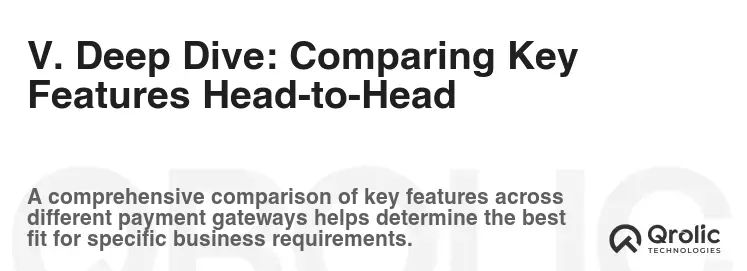
| Feature | PayPal | Stripe | Square |
|---|---|---|---|
| Ease of Setup | Very Easy | Moderate (Requires Developer) | Very Easy |
| Customization | Limited | High | Limited |
| Payment Methods | Credit Cards, PayPal Balance | Credit Cards, Debit Cards, Digital Wallets, ACH, International Methods | Credit Cards, Debit Cards, Digital Wallets, In-Person Payments |
| Fraud Prevention | Basic | Advanced (Stripe Radar) | Basic |
| Subscription Billing | Basic | Advanced | Basic |
| Mobile Payments | Yes | Yes | Yes |
| In-Person Payments | Limited (Requires Additional Hardware) | Requires Third-Party Integration | Yes (Integrated POS System) |
| Global Reach | Wide | Wide | Limited (Primarily US, Canada, Australia, UK, Japan) |
| Developer Friendliness | Low | High | Low |
| POS Integration | Limited | Requires Third-Party Integration | Seamless |
| Customer Support | Can be challenging to navigate | Excellent Documentation, Developer Support | Good, but can be slow at times |
| Pricing (Typical) | 2.9% + $0.30 per transaction | 2.9% + $0.30 per transaction | 2.9% + $0.30 online, 2.6% + $0.10 in-person |
| Security | PCI DSS Compliant | PCI DSS Compliant | PCI DSS Compliant |
VI. Choosing the Right Payment Gateway: A Step-by-Step Guide
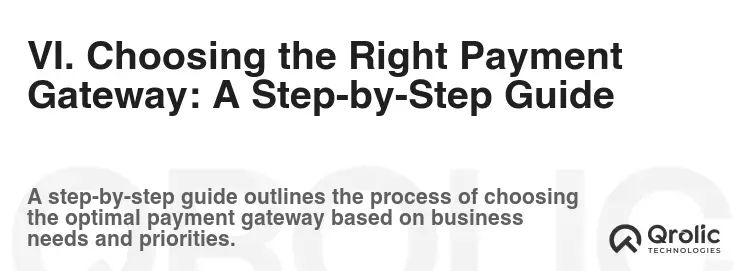
Step 1: Assess Your Business Needs
- Online vs. Offline Sales: Do you primarily sell online, offline, or both?
- Transaction Volume: What is your expected monthly transaction volume?
- Average Transaction Size: What is the average value of your transactions?
- Technical Expertise: Do you have a development team or the resources to hire developers?
- Customization Requirements: How much customization do you need for your checkout experience?
- International Sales: Do you sell to customers in multiple countries?
- Subscription Billing: Do you offer subscription-based products or services?
- Security Requirements: What are your specific security requirements?
Step 2: Compare Pricing Models
- Transaction Fees: Compare the per-transaction fees charged by each gateway.
- Monthly Fees: Consider any monthly fees for specific features or services.
- Hidden Fees: Be aware of potential hidden fees, such as chargeback fees or early termination fees.
- Volume Discounts: Inquire about volume discounts if you anticipate high transaction volumes.
Step 3: Evaluate Features and Functionality
- Payment Methods: Ensure the gateway supports the payment methods your customers prefer.
- Fraud Prevention: Evaluate the gateway’s fraud prevention capabilities.
- Integration Options: Check if the gateway integrates with your e-commerce platform, CRM system, and other business tools.
- Reporting and Analytics: Assess the quality of the gateway’s reporting and analytics tools.
Step 4: Consider Security and Compliance
- PCI DSS Compliance: Ensure the gateway is PCI DSS compliant.
- Security Measures: Review the gateway’s security measures for protecting sensitive customer data.
- Data Encryption: Verify that the gateway uses robust encryption to protect data during transmission.
Step 5: Test and Pilot
- Test Accounts: Create test accounts with each gateway to experiment with the platform and its features.
- Pilot Program: Run a pilot program with a small group of customers to test the gateway in a real-world environment.
- Gather Feedback: Collect feedback from customers and employees to identify any issues or areas for improvement.
VII. Optimizing Your Payment Gateway for Conversion
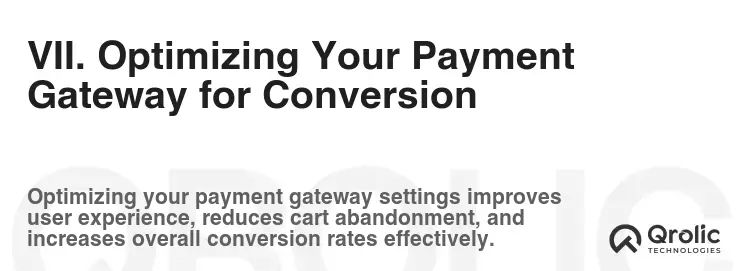
Streamline the Checkout Process
- Minimize Steps: Reduce the number of steps required to complete a purchase.
- Guest Checkout: Offer a guest checkout option for customers who don’t want to create an account.
- Mobile Optimization: Ensure your checkout process is optimized for mobile devices.
Build Trust and Security
- SSL Certificate: Install an SSL certificate to encrypt data transmitted between your website and your customers.
- Security Badges: Display security badges from trusted security providers.
- Clear Privacy Policy: Provide a clear and concise privacy policy that explains how you collect and use customer data.
Offer Multiple Payment Options
- Credit Cards: Accept major credit cards, such as Visa, Mastercard, American Express, and Discover.
- Digital Wallets: Offer popular digital wallets, such as PayPal, Apple Pay, and Google Pay.
- Local Payment Methods: Support local payment methods that are popular in your target markets.
Provide Excellent Customer Support
- Live Chat: Offer live chat support to answer customer questions in real-time.
- Email Support: Provide prompt and helpful email support.
- FAQ Page: Create a comprehensive FAQ page to address common customer questions.
VIII. The Future of Payment Gateways
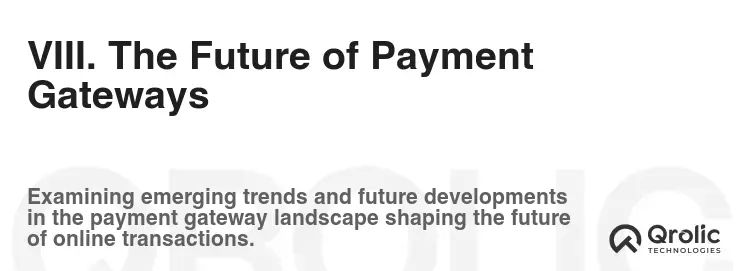
The landscape of online payment gateways is constantly evolving. Here are some trends to watch:
- Increased Adoption of Digital Wallets: Digital wallets like Apple Pay and Google Pay are becoming increasingly popular.
- Biometric Authentication: Biometric authentication methods, such as fingerprint scanning and facial recognition, are being used to enhance security.
- Blockchain Technology: Blockchain technology has the potential to revolutionize the payment industry by providing a more secure and transparent payment system.
- Artificial Intelligence (AI): AI is being used to improve fraud detection, personalize the checkout experience, and automate customer support.
- Embedded Finance: Payment gateways are increasingly offering embedded finance solutions, such as lending and insurance, directly within their platforms.
IX. Qrolic Technologies: Your Partner in E-Commerce Success
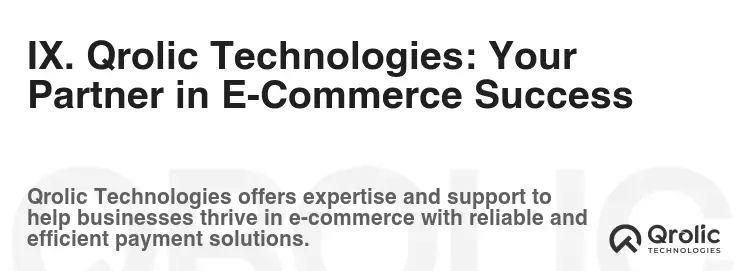
At Qrolic Technologies (https://qrolic.com/), we understand the complexities of the e-commerce landscape. We provide comprehensive e-commerce development and consulting services to help businesses of all sizes thrive online. Our expertise includes:
- E-Commerce Platform Development: We build custom e-commerce platforms tailored to your specific business needs.
- Payment Gateway Integration: We seamlessly integrate payment gateways like PayPal, Stripe, and Square into your e-commerce platform.
- SEO Optimization: We optimize your website for search engines to drive more organic traffic.
- Digital Marketing: We develop and execute digital marketing strategies to reach your target audience.
- Mobile App Development: We create mobile apps for iOS and Android to enhance your customer experience.
We can help you choose the right payment gateway for your business and optimize it for conversion. Contact us today to learn more about how we can help you achieve your e-commerce goals.
X. Conclusion: Making the Right Choice for Your Business
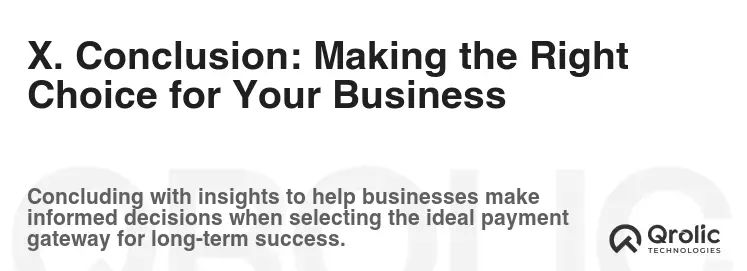
The decision of which payment gateway to use—PayPal, Stripe, or Square—is a critical one that significantly impacts your business’s financial health, customer experience, and operational efficiency. There is no one-size-fits-all solution.
- Choose PayPal if you value brand recognition, ease of use, and a large user base.
- Choose Stripe if you need a highly customizable solution, advanced features, and have access to developers.
- Choose Square if you have both online and offline sales and need an integrated POS system.
Carefully consider your business needs, compare pricing models, evaluate features, prioritize security, and test the platforms before making a final decision. By taking a strategic approach, you can select the payment gateway that best aligns with your business goals and sets you up for long-term success in the dynamic world of e-commerce. And always remember that seeking expert guidance, like that offered by Qrolic Technologies, can be invaluable in navigating this complex decision. Investing time and effort in making the right choice is not just about processing payments; it’s about building trust, fostering growth, and securing your place in the competitive digital marketplace. Optimizing payment gateways ensures “best e-commerce payment solutions” are deployed.
